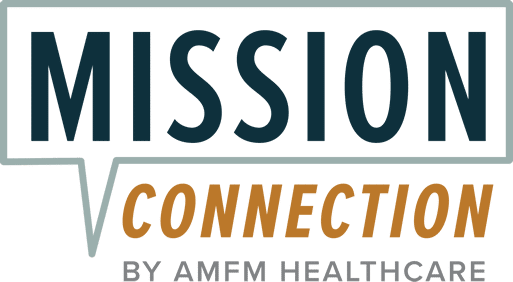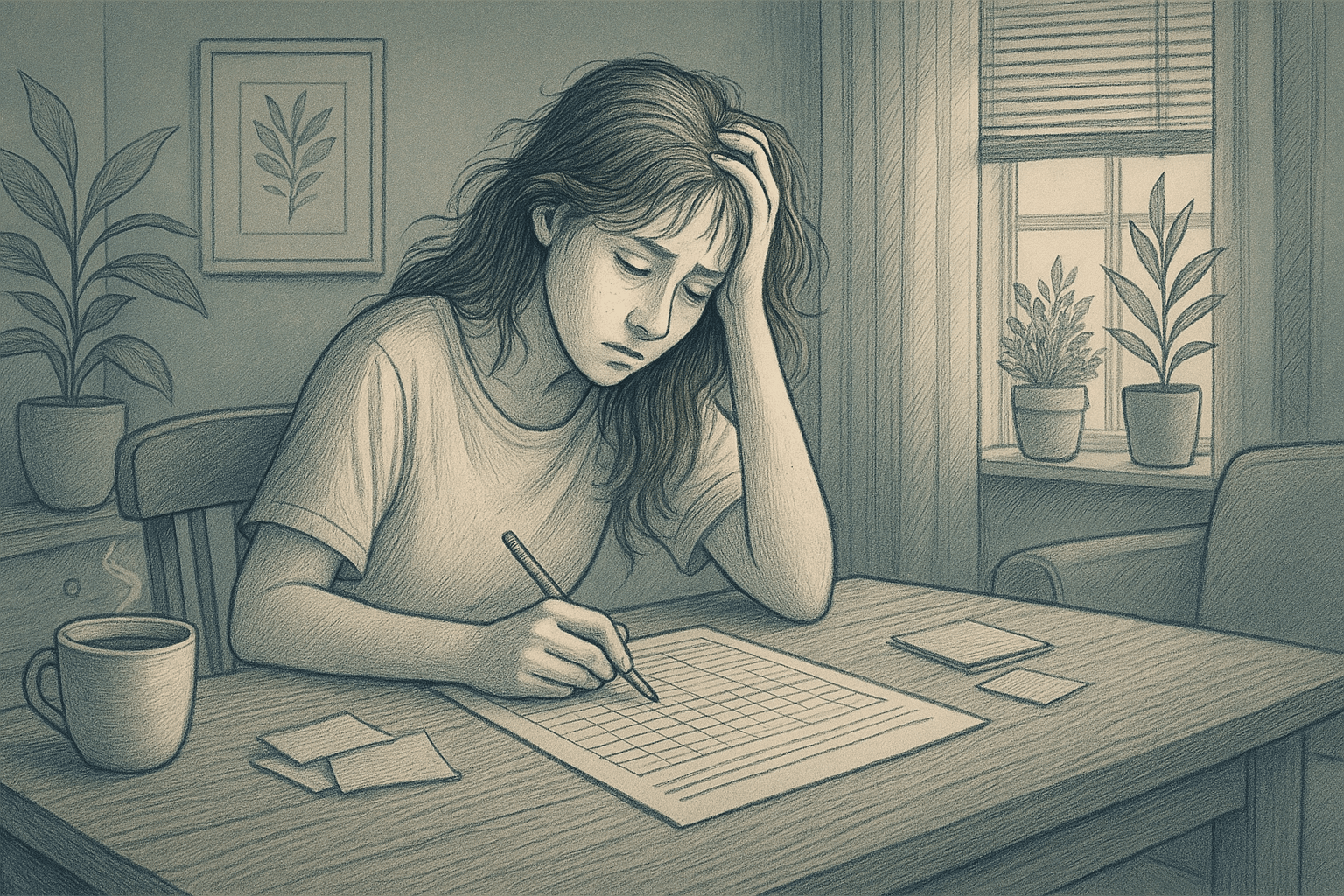
Key Takeaways
- Anxiety symptom trackers help identify patterns and triggers, allowing you to take control of your anxiety management.
- Consistent tracking of symptoms, including date, time, intensity, and triggers, provides valuable insights for developing effective coping strategies.
- Choose a tracker format that fits your lifestyle—whether digital app, physical journal, or digital diary—to ensure consistent use.
- Regular analysis of your tracking data helps identify both anxiety triggers and effective coping mechanisms, leading to improved mental wellbeing.
- Mission Connection offers personalized anxiety treatment plans that can be enhanced by sharing your symptom tracker insights with our mental health specialists.
Anxiety Symptom Tracker Basics
Definition and Purpose
An anxiety symptom tracker is a tool designed to help individuals monitor their anxiety symptoms over time. By recording specific details about when and how anxiety occurs, these trackers can reveal patterns that might not be immediately obvious.
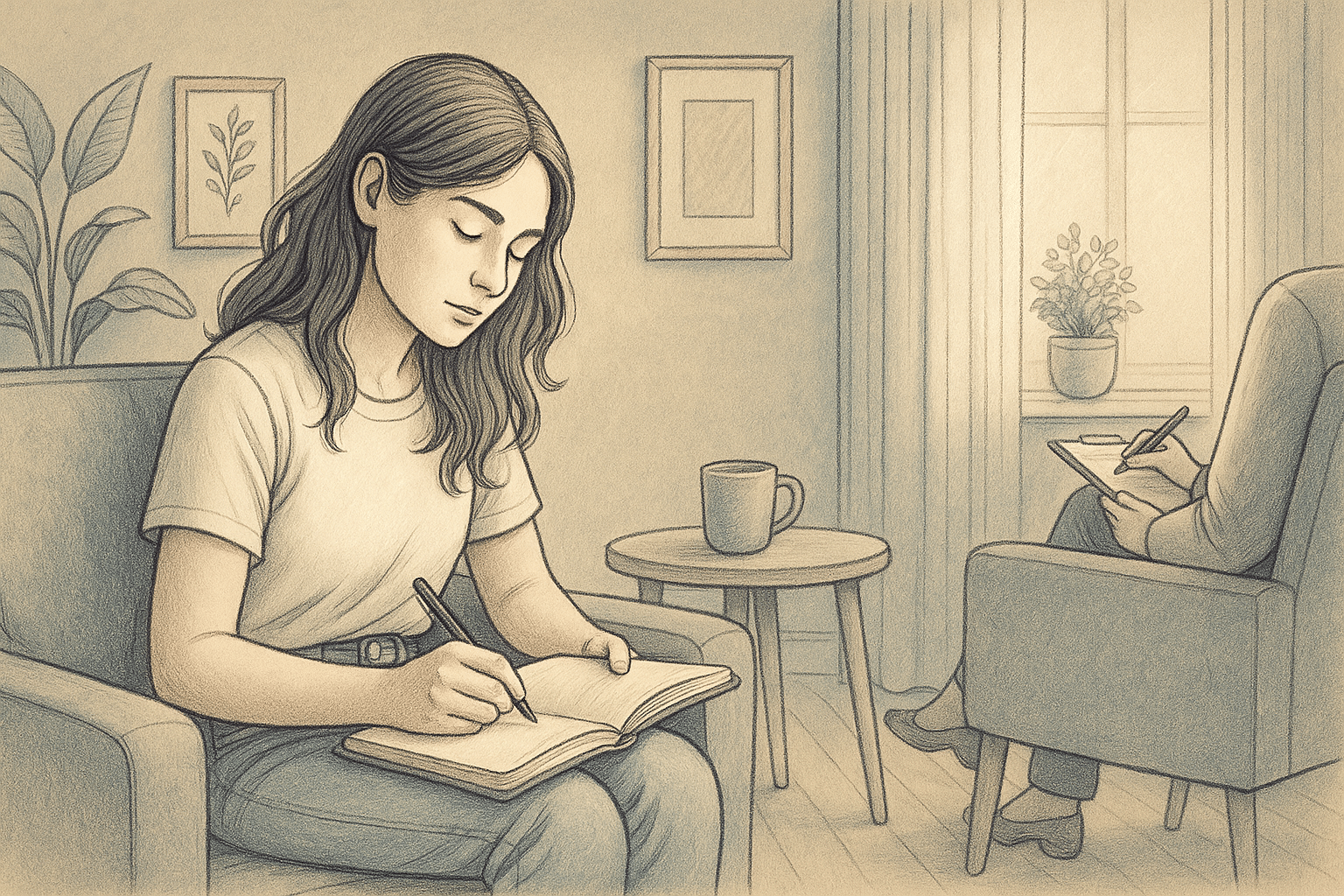
Importance for Mental Health
Understanding one’s mental health aids effective management. An anxiety symptom tracker can provide insights that are often overlooked in daily life. By identifying triggers and patterns, individuals can work towards mitigating the impact of anxiety.
Tracking Benefits
Keeping track of anxiety symptoms enhances self-awareness. By knowing what triggers your anxiety, you can adopt proactive management strategies that can make a real difference in your daily life.
Additionally, documenting your experiences provides you with valuable information to share with mental health professionals, ensuring that your discussions are grounded in your unique experience.
Mission Connection offers flexible outpatient care for adults needing more than weekly therapy. Our in-person and telehealth programs include individual, group, and experiential therapy, along with psychiatric care and medication management.
We treat anxiety, depression, trauma, and bipolar disorder using evidence-based approaches like CBT, DBT, mindfulness, and trauma-focused therapies. Designed to fit into daily life, our services provide consistent support without requiring residential care.
Steps to Use an Anxiety Symptom Tracker
Choosing the Right Tracker
When selecting a tracker, consider the following:
- Ease of Use: Choose a tracker that is easy to use and fits seamlessly into your daily routine.
- Features: Look for features that allow for detailed entries and pattern analysis.
- Accessibility: Ensure the tracker is easily accessible whenever you need to make an entry.
Once you’ve chosen a tracker, the next step is to start recording your symptoms.
Recording Symptoms
When recording your symptoms, be as detailed and consistent as possible. Note the date, time, intensity (on a scale of 1–10), physical sensations (like racing heart or shortness of breath), thoughts, and potential triggers. Also document what you were doing when the anxiety occurred and any coping strategies you used.
Try to record entries soon after experiencing symptoms to ensure accuracy. Set a regular schedule for entries, such as morning and evening, while also making additional entries during anxiety episodes. This combination of scheduled and event-based recording provides the most comprehensive picture of your anxiety patterns.
Analyzing Patterns
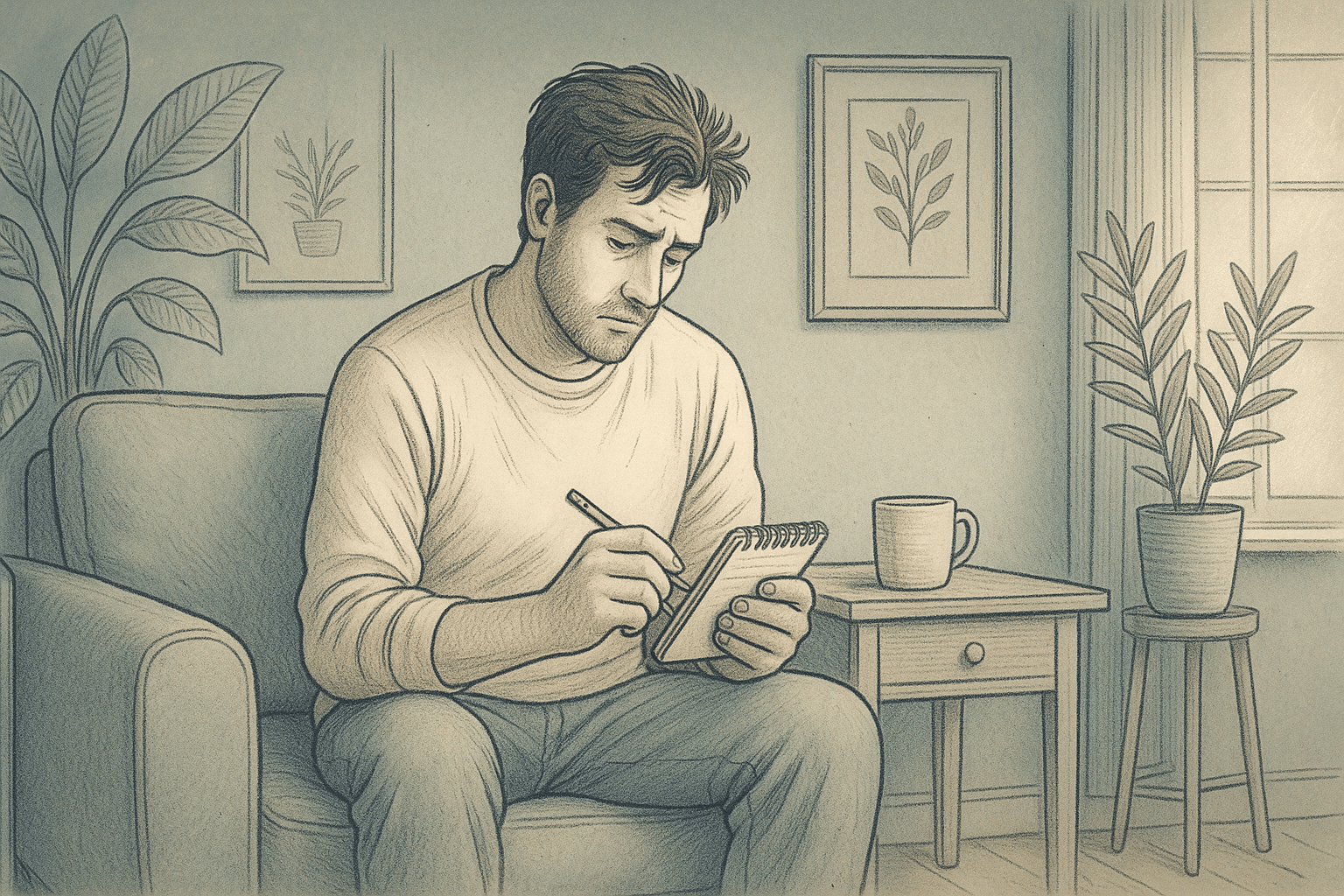
Set aside time weekly to look through your entries and note any recurring triggers, times of day, or situations associated with your anxiety. Look for connections between your activities, thoughts, physical symptoms, and anxiety levels.
Also, pay attention to both what increases your anxiety and what helps reduce it. This analysis can reveal effective coping strategies and help you anticipate and prepare for situations that typically trigger your anxiety. Over time, these insights can inform discussions with healthcare providers and guide your personal anxiety management plan.
Maximizing the Tracker’s Effectiveness
Consistency in Use
Regular entries provide a more accurate picture of your anxiety patterns. Track both anxious moments and periods of calm to see what factors contribute to a more relaxed state.
Make it a habit to log entries at the same time each day. This could be in the morning, reflecting on the previous day, or in the evening, capturing the day’s events. Consistent tracking can reveal trends and triggers that are essential for managing anxiety.
Identifying Triggers
Identifying triggers is a critical step in managing anxiety. By using the tracker, you can pinpoint specific situations, environments, or interactions that lead to increased anxiety. This awareness allows you to develop strategies to avoid or cope with these triggers effectively.
Sharing Insights with Professionals
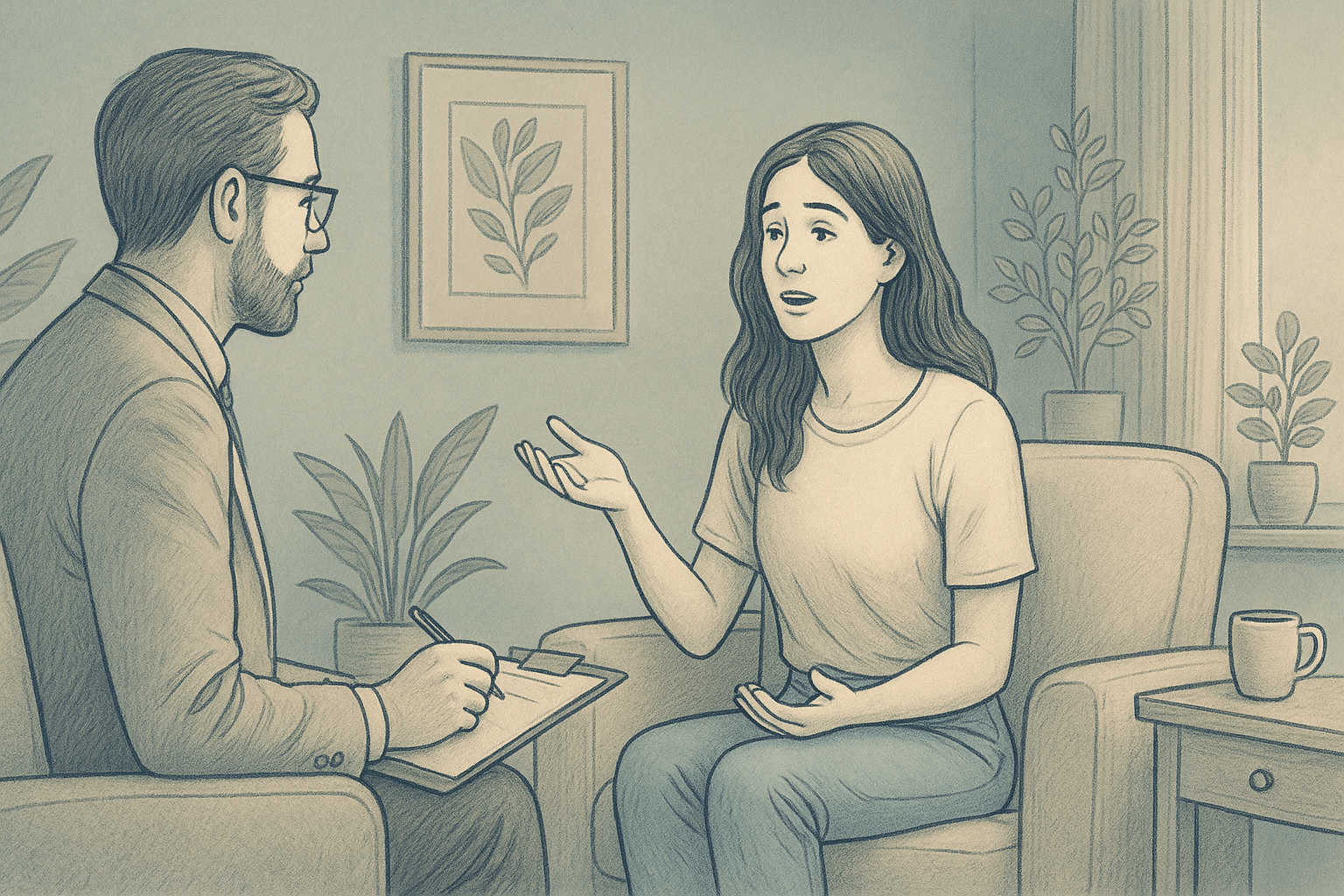
When you share insights with your mental health professional, they can help interpret the data, providing guidance on coping mechanisms and treatment adjustments.
For example, if your tracker shows increased anxiety in social situations, a therapist might suggest exposure therapy or social skills training as part of your treatment plan.
Popular Anxiety Symptom Tracking Tools
Several tools available to help you track anxiety symptoms. These range from high-tech apps to traditional paper journals. Each has its own set of features and benefits, catering to different preferences and lifestyles.
Choosing the right tool depends on your personal needs and how you prefer to record and analyze your data.
Apps for Anxiety
Apps are a popular choice for tracking anxiety symptoms due to their convenience and accessibility. Many apps offer features such as reminders, data analysis, and even integration with wearable devices.
Some popular apps include:
- MindShift CBT: Focuses on cognitive-behavioral therapy techniques to help manage anxiety.
- Pacifica: Provides tools for tracking mood, practicing mindfulness, and setting personal goals.
- RealifeChange: This app serves as a life coach in digital form. It allows you to log life events and moods by type, intensity, impact, and location. Based on your entries, it offers actionable steps to help improve your well-being.
Physical Journals
If you prefer a more tactile approach, physical journals can be a great option. Writing by hand can be a calming process, and it gives a tangible record of your journey.
Physical journals allow for creativity, such as drawing or doodling, which can be therapeutic. They can be customized with prompts or sections that suit your specific tracking needs.
Digital Diaries
Digital diaries offer a middle ground between apps and physical journals. They can be accessed via computers or tablets, allowing for more detailed entries than some apps.
These diaries often provide features like tagging, searching, and organizing entries, which can help in identifying patterns over time.
Digital diaries can also be backed up online, ensuring your data is safe and accessible from multiple devices.
Differences Between Physical and Digital Options
| Feature | Apps | Physical Journals |
| Accessibility | High, always on phone | Medium, needs to be carried |
| Customization | Limited by app features | Highly customizable |
| Cost | Varies, some free options | Cost of journal and pens |
Tips for Beginners
Starting Small
When beginning with an anxiety symptom tracker, start small. Focus on one or two key symptoms that are most troubling. This approach makes the task less overwhelming and allows you to gradually build the habit of tracking.
For example, if you notice that your heart races or your hands become sweaty during certain situations, start by noting when these occur. Over time, you can expand to include more symptoms as you become comfortable with the process.
Setting Realistic Goals
Setting realistic goals is essential to maintaining motivation. Instead of aiming for perfection, aim for consistency. Decide on a frequency that fits your lifestyle, whether it’s daily, every other day, or weekly. To succeed, make tracking a regular part of your routine without adding stress.
Celebrating Progress
Recognizing and celebrating progress is crucial for staying motivated. Tracking anxiety symptoms is not just about identifying problems; it’s also about acknowledging improvements and changes. Celebrate small victories, like identifying a pattern or managing a trigger effectively.
By rewarding progress, you can maintain a positive outlook and continue using the tracker as a helpful tool in your anxiety management journey.
Mission Connection’s Approach to Anxiety Management
An anxiety symptom tracker is more than a diary—it’s a powerful tool that can transform how you understand and manage your anxiety. At Mission Connection, we believe in combining self-management tools like symptom trackers with professional, evidence-based treatment for optimal results.
Our team of anxiety treatment experts in California, Virginia, and Washington can help interpret your tracking patterns, identify underlying causes, and develop personalized strategies that address your unique anxiety experience.

From personalized assessments and specialist consultations to customized treatment plans utilizing proven approaches like Cognitive Behavioral Therapy, we provide the professional support needed to translate your tracking insights into effective action.
Don’t face anxiety alone. Let Mission Connection help you transform your symptom tracker data into a roadmap for recovery, with convenient access to care, privacy-focused treatment, and ongoing support from our multidisciplinary team. Together, we can turn understanding into healing and work toward an anxiety-free life.
Call Today 866-833-1822.
Frequently Asked Questions (FAQ)
How does tracking help with anxiety?
Tracking helps by providing a structured way to monitor symptoms, identify patterns, and recognize triggers. You can get a clearer picture of how anxiety affects you and allows for informed decisions on managing it. By understanding these patterns, you can work on strategies to mitigate anxiety’s impact.
What should I look for in a symptom tracker?
When selecting a symptom tracker, consider factors like ease of use, customization options, and accessibility. The tracker should fit seamlessly into your daily routine and offer features that cater to your specific needs, such as reminders, data analysis, and integration with other tools.
Can tracking symptoms ever be harmful?
While tracking symptoms can be beneficial, it’s important to approach it with a balanced mindset. Obsessive tracking or focusing too much on negative patterns can increase anxiety. It’s crucial to use the tracker as a tool for understanding and managing anxiety, not as a source of stress.
How often should I update my tracker?
The frequency of updates depends on personal preference and the nature of your symptoms. Some people find daily tracking helpful, while others prefer less frequent updates. The key is consistency. Choose a schedule that feels manageable and stick to it.
What types of anxiety disorders does Mission Connection treat?
Mission Connection specializes in treating various anxiety disorders, including Generalized Anxiety Disorder, Panic Disorder, Social Anxiety Disorder, specific phobias, Obsessive-Compulsive Disorder, and Post-Traumatic Stress Disorder. Our treatment approach is customized to each individual’s specific needs, with personalized assessment and treatment plans developed in collaboration with licensed therapists.
